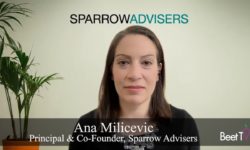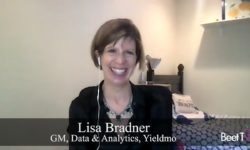Digital ad identifiers like cookies may be drying up – but some media companies think that offers them an opportunity.
For many, the current moment is about re-establishing the primacy of publisher-audience relationships.
In this video interview with Beet.TV, Susan Parker, chief strategy officer at Nexstar Digital, which recently purchased The Hill for $130 million, explains her company’s approach.
More Hills in the stars?
Nexstar’s assets include:
- Nexstar Media Group, with 199 TV stations, 120 websites and 284 local apps.
- BestReviews, a reviews website.
- The Hill, the respected politics news site.
- NewsNation, a cable news channel.
Parker says Nexstar plans to continue growing, partly through acquisition, after its The Hill acquisition.
“We’ve had acquisitions and we’ve been growing a lot, and I anticipate that we’ll continue to grow and really focus on developing and acquiring really valuable audiences,” she says.
“We’re the largest company nobody’s ever heard of, but hopefully that won’t be for long.
“We’re now at almost 100 million uniques a month, and, with the recent acquisition of The Hill and an earlier acquisition of BestReviews, we just keep getting bigger.”
Contextual Targeting Is Back in the Media Mix, Channel Factory’s Jed Hartman
Shifting media targeting
How Nexstar sells ads is changing. This year, it launched Stellar, a platform which lets advertisers use data from across its audience footprint to buy digital and linear ads seamlessly across media types, supposedly leading to a return on ad spend up to 40 times greater.
“We have a series of proprietary algorithms and machine learning models that we use to identify where an advertiser’s campaign is going to perform the best,” she says.
“And we are always looking at those both content and audience signals to constantly optimize throughout the life of the campaign for content type as well as media type.”
Comscore Has Local TV Measurement Deals With Nexstar, Scripps And Gray
From identity to audience
For Parker, that represents a shift in targeting mechanics – from using audience identifiers to using audience relationships.
“The entire industry need to be looking, ‘How do we really maximize our content and audience relationships beyond the dream of that one-to-one marketing?
“I don’t really believe that (technique) is necessary to reach the right audiences and to have effectiveness in campaigns. If you look at traditional media types, they’ve never been able to do that, and yet have still maintained effectiveness and value to their advertisers.”
Context’s new context
She says “identifier-based targeting and measurement techniques” can “look great on spreadsheets” but can under-perform.
So she, like many especially on the publishing side of the industry, are looking fondly at “contextual” targeting.
It is a new-wave digital technique but one that may be familiar to many from traditional ad sales days.
“Traditional contextual keyword targeting is certainly one way to do it and really great for highly verticalized advertisers,” Parker says.
“But there’s other things that use context that aren’t just keyword targeting – our solutions actually take that into account. We look at a number of factors and we identify in our solutions content that will perform for a particular campaign.”
You’re watching “Diversifying Spend: Buying Beyond Audiences” a Beet.TV Leadership Series presented by Yieldmo. For more videos from this series, please visit this page.
































